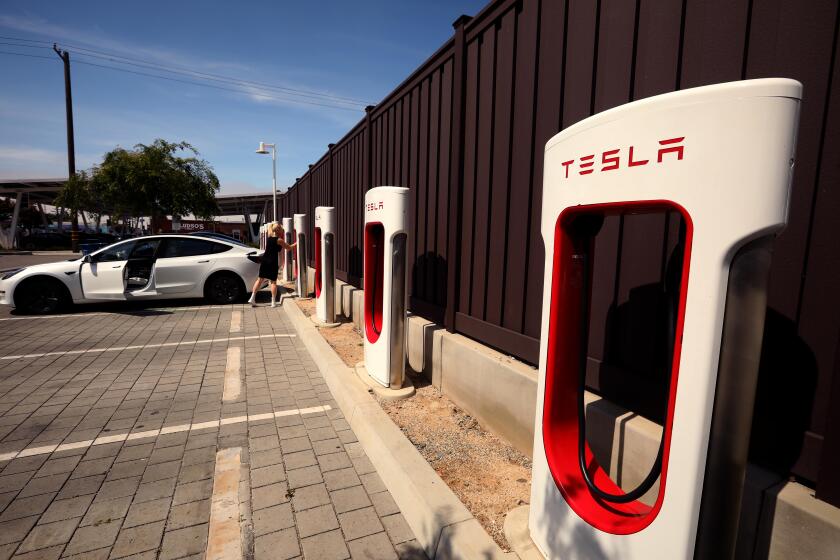Two Ways to Reform Auto Insurance
The California Supreme Court just bounced the auto insurance ball back into the Legislature’s court. In a 7-0 decision last week, the court declared the state’s mandatory auto insurance law constitutional.
A 1984 law requires all California drivers to have liability insurance or face up to a $240 fine and/or loss of license. The court said that while auto insurance may be unaffordable for some Californians, the remedy is in the halls of the Legislature, not the courtroom.
For the approximately two months the mandatory law was enforced, more than 100,000 drivers lost their licenses. Despite these problems, the Legislature has not passed any major auto insurance reform measures.
Auto insurance in urban areas is expensive. In some parts of Los Angeles, premiums of $1,000 per year are common for the minimum required liability insurance. Rates in most areas are increasing well above all inflation indicators.
Higher rates are not just the fault of insurance companies. Escalating loss costs indicated other reasons why premiums continue to increase. Medical, auto repair and litigation costs are increasing at dramatic rates.
The areas with the highest auto insurance rates in the state also have the highest number of uninsured drivers. In some Los Angeles ZIP codes, for example, the state Department of Insurance estimates that more than 86% of drivers are uninsured.
In addition, there are areas of the state that are under-served by insurance companies. The DOI survey found problems with availability and ability to afford in Compton, Huntington Park and in the southern, central and eastern parts of Los Angeles.
The corresponding “loss costs” for companies that insure drivers in these neighborhoods is also high. It’s a vicious cycle: the higher the loss costs, the higher the insurance rates; the higher the rates, the more people who can’t afford coverage.
In a state without a good public transit system, consumers must drive just to accomplish the basics--to get to work, to the doctor and to the supermarket.
Yet this is not just a problem for low-income consumers. All consumers pay for uninsured drivers through higher premiums for uninsured motorist coverage.
Enforcing the mandatory insurance law will not solve the problem. Without a significant decrease in rates, some drivers will simply end up as uninsured and unlicensed drivers.
What’s the solution? So far, rhetoric has dominated the problem-solving process. The insurers and the trial lawyers point fingers at each other. The insurers blame the lawyers, courts, juries and the legal system. In return, the lawyers refuse to acknowledge any possible weaknesses in the current tort system.
Each year these two powerful special interest lobbies battle in the Legislature. Each year the battle ends with a stalemate. So far the Legislature has been unable to rise above these battles and pass an auto insurance reform program.
The time for Band-Aid solutions is long past. Minor reforms such as increasing the regulation of, or the coverage provided by, the assigned-risk plan are good ideas, but inadequate. Assigned risk, the state-contracted insurance program for drivers who cannot find insurance any other way, simply cannot address the enormity of this problem.
The answers are comprehensive reforms. These reforms must decrease rates to an affordable level so that consumers feel they are getting value from their premium dollars. Auto insurance must be easily available to all drivers. Rates must be based on fair and meaningful risk indicators.
Proposals that drastically restrict a severely injured consumer from receiving compensation are unacceptable. Any insurance program must accomplish its basic tenet: indemnification for injury or loss.
Several proposals have merit; two hold the promise of universal coverage and lower premiums.
No-fault insurance should be taken out of the closet, dusted off and carefully reexamined. Under a no-fault system, the ability to bring a lawsuit is curtailed and each driver’s insurance covers losses, regardless of fault. With the proper protections for severely injured consumers, a no-fault system should provide for lower premiums and higher recoveries for injured consumers.
During the past legislative session, Assemblyman Richard Polanco (D-Los Angeles) proposed establishing the state as an insurer. With some changes, this presents an interesting concept that could provide universal coverage without state subsidies. If the state acted as the insurer for basic auto liability coverage, with payment through registration and license fees, insurance companies’ costs would be significantly decreased. Further, by merging this concept with a no-fault proposal, even lower rates might be achieved.
Combining the two proposals would take something away from everyone. Consumers and trial lawyers would have to give up some of their ability to bring suit and insurance companies would be subjected to greater state intrusion into their business.
Once enforcement of the mandatory insurance law begins again on Jan. 1, the time bomb will start ticking. Consumers will start having to purchase auto insurance or face loss of their license. Once again they will start telephoning their legislators demanding relief.
The time to start crafting meaningful reform is now. Insurers, lawyers, consumer groups and legislators should catch the ball from the Supreme Court and run with it.



